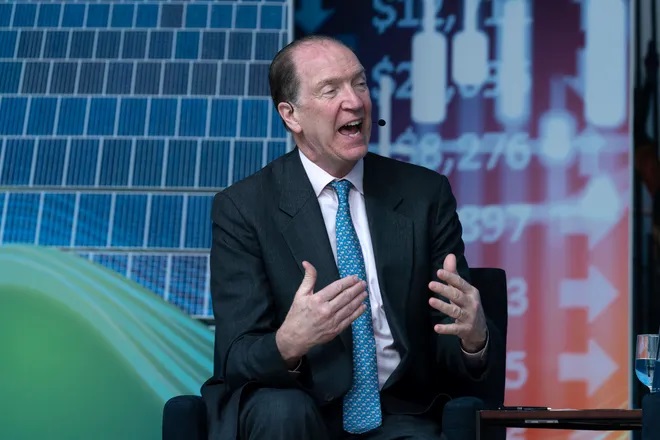On April 11, the International Monetary Fund (IMF) warned that its economic outlook for 2023 has been lowered. IMF Managing Director Kristina Georgieva cautioned that global growth is set for the weakest near-term expansion since 1990.
The IMF forecasts that the U.S. economy, the world’s largest, will expand 1.6% this year, down from 2.1% in 2022. The global economy is predicted to grow 2.9% in 2023, down from 3.4% in 2022.
Some economists worry that the U.S. could enter a recession this year. The cause could be a result of reduced lending from regional and community banks. Jerome Powell said, “I have not seen evidence at this stage suggesting a contraction in credit, although that is a possibility … So I am not anticipating a downturn in the economy, although, of course, that remains a risk.”
Depositors have concerns about health of small, midsized banks
After U.S. regulators closed Silicon Valley Bank (SVB) and Signature Bank, some depositors became fearful about the health of small and midsized banks. Uninsured depositors fled out of fear that large losses in these banks securities and mortgage portfolios undermined their solvency. The failures rocked market confidence and triggered significant emergency responses by authorities. After their collapses, the 25 biggest U.S. banks gained $120 billion in deposits and all U.S. banks below that level lost $108 billion.
The IMF projected that U.S. banks’ lending capacity will decline by 1% this year because of the fall in the value of many bank stocks as investors reassess the health of small and midsize banks.
The IMF reported that regional and smaller banks in the United States account for more than one-third of total bank lending. If these banks cut back on their lending activities, this could have a material impact on our economic growth and financial stability.
In its latest World Economic Outlook, the IMF warned that there is significant risk that recent banking turbulence could spread to the broader economy and hurt business and consumer confidence. The report said, “Recession concerns have gained prominence, while worries about stubbornly high inflation persist.”
The IMF reported, “With the recent increase in financial market volatility, the fog around the world economic outlook has thickened. Uncertainty is high, and the balance of risks has shifted firmly to the downside so long as the financial sector remains unsettled.”
The challenge: Keep inflation in check while avoiding recession
IMF chief economist Pierre-Olivier Gourinchas told a news conference that “monetary policy needs to stay focused on price stability to keep inflation expectations in check.” Policy makers have a narrow path to walk to bring down inflation while avoiding a recession and maintaining financial stability.
The current banking turmoil has roots that are fundamentally different from those of the Great Recession of 2008 to 2009. Banks failed (over 600) during this period because of bad loans and poor credit underwriting. Most banks were woefully undercapitalized, held far fewer liquid assets, and had much more exposure to credit risk.
In contrast, the recent mayhem is different. The banking system has much more capital and funding to weather adverse shocks. In 2010, the Dodd-Frank Act was passed to prevent excessive risk taking. The current problem has been the rapid rise in interest rates to quell inflation. Higher interest rates make it more costly for businesses to borrow. Nonbank financial firms (hedge funds, private equity funds, insurance companies) will be exposed to credit risk deterioration with a slowing economy.
A growing source of risk is in the commercial real-estate sector: Companies are facing lower property valuations and are struggling to find tenants after the pandemic shifted work away from office buildings.
In summarizing the current dilemma, the IMF said, “The fundamental question confronting market participants and policymakers is whether these recent events are a harbinger of more systematic stress that will test the resilience of the global financial system.”
Originally published in the Sarasota Herald-Tribune




